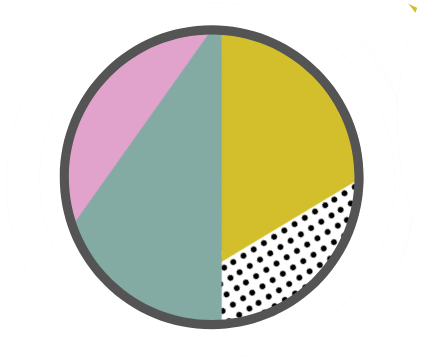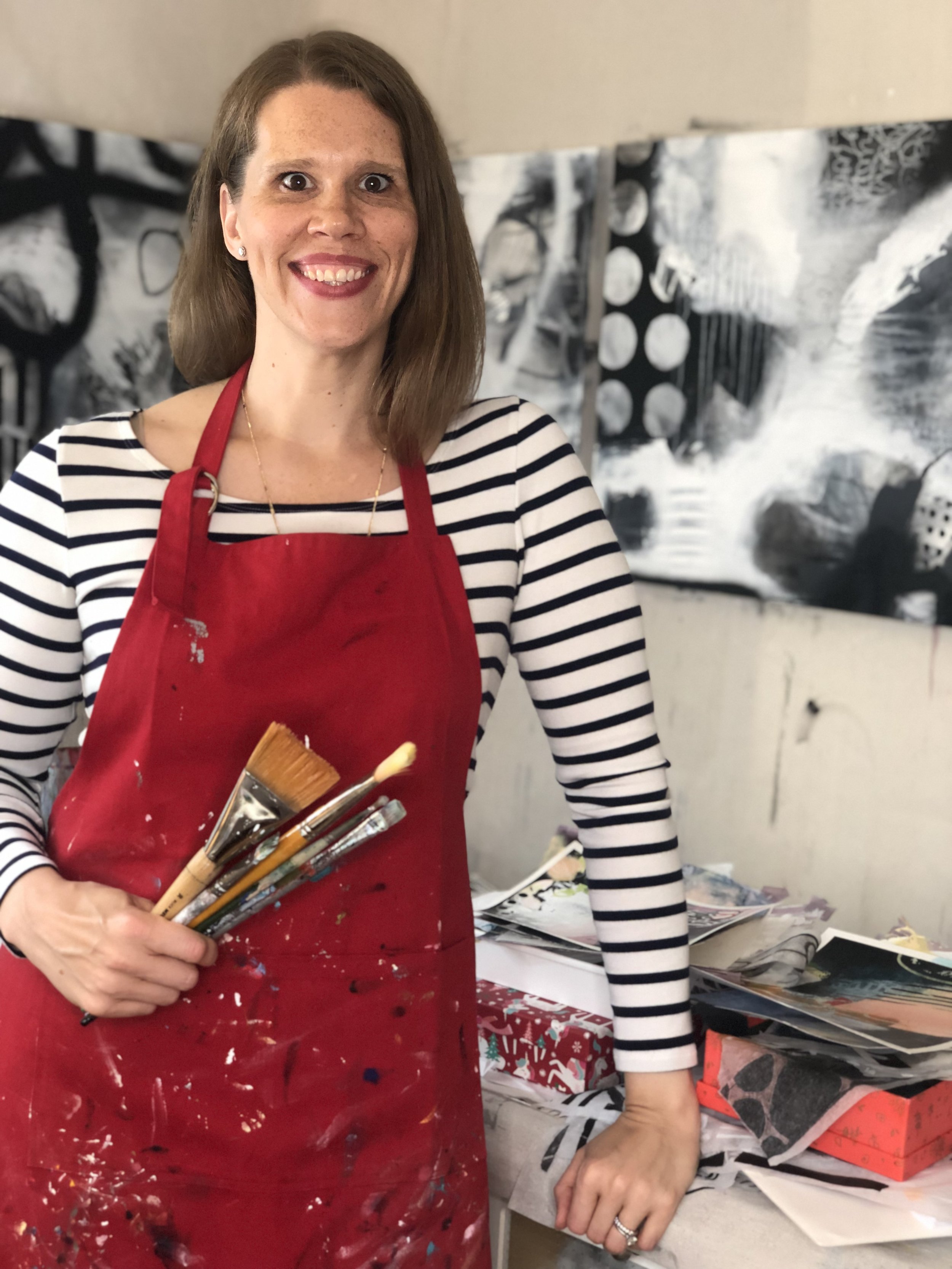Guest Post: What is Process Art?
Today, I’m happy to introduce my friend and fellow artist, Jackie Schomburg Meynen. Jackie and I met years ago at a Sabrina Ward Harrison workshop in Chicago. We hit it off right away and admired each others love for layers and mess and all things art. Jackie is making amazing moves forward in her study of Process Art and has recently started to teach her process on Youtube.
In this article, Jackie unfolds the story of how she got into Process Art, what exactly that is and how you can give it a go too! Enjoy!
In my twenties, I spent a few years taking improv comedy classes and performing improv at a local theater. It was the most fun I’ve ever had. Now that I’m a mom to three young kids, driving into the city for late night shows isn’t practical. Since then, I’ve been looking for something similar that would allow me to show up (with zero pre-work and no agenda) just to let loose and play. I found it with process art.
Process art is essentially the type of art we made in kindergarten.
We picked up a crayon without much thought and used it to mark up a piece of paper. When we felt done, we picked up another color and made more marks. It may or may not have looked pretty at the end, but it was 100% our own. It came from our intuition because we trusted ourselves and our instincts.
With process art, it is the process of making the art that is the focus (e.g. the way the paint/marker/crayons feel on the paper, the colors that intuitively "feel right" in that moment). The end result is simply a compilation of the intuitive decisions you've made along the way (the media, substrate, color, and methods chosen during the art making). It’s a way to play with art supplies without the judgement and scrutiny that can accompany art making if we take ourselves or our art too seriously.
This is a distinctively different goal than with product-focused art, which is what most people typically think of when they think of art. With product-focused art, the artist begins with the end goal of a finished painting/drawing/sculpture in mind - a beautiful and/or sellable piece of art.
When people say "I can't draw" they usually mean that they don't believe they can draw a picture of an object that realistically resembles the object. But that's just one type of drawing. When focused on the process of art making, over the product, everyone can draw. Drawing is simply making marks on paper. So, according to this definition, if you can write your name, congratulations - you can draw! Likewise, painting is using paint to make marks on paper. Again, everyone can do this. Brene Brown says, "There is no such thing as creative and non-creative people, only people who use their creativity and those who don't." and I agree! As humans we have an innate need to express ourselves. Somewhere along the line we decided to judge ourselves (and each other) harshly - especially with respect to our creative endeavors and that’s where process art can help.
Somewhere along the way, most of us stopped trusting ourselves and our decisions and relied on others to tell us what was cool and how we "should" be. Process art helps remind us how to trust ourselves again and, in my case, it continues to help me remember who I am.
After having three kids in 16 months, I was drowning in children for about 4 years straight. I lost touch with the ME who used to do anything other than feed kids, change diapers, and kiss boo boos. I have always felt most like myself when I'm creating, but many times I’ve fallen victim to a perfectionistic commentary in my mind that whatever I’m making isn’t good enough - or that I shouldn’t continue because I might mess it up. Returning to making process art again helped ease me back into art making without judgement and this helped me to come back to myself again.
I initially learned about process art from Open Studio Project (OSP) in Evanston, IL. OSP was founded by art therapists and is a wonderfully welcoming and accepting space. All people are assumed to have everything they need to create inside of them - no outside training or artistic ability required. You simply show up and create. I took classes there for two years and eventually became a certified OSP Facilitator.
How to use the Open Studio Project method for process art:
Set an intention - An intention is a positive statement of something you hope to be, stated as if you already possess it. For example, if you are anxious, you might state, “I am calm” or if you are feeling tired you might state “I am energetic and full of enthusiasm for the day.”
Make art with simple, inexpensive and readily available materials - crayons, markers, tempera paints are all good to start with so that you don’t feel like you’re “wasting” expensive art supplies. Making marks on paper is the goal - the only goal. Try to honor your first impulse of which colors to use and what shapes to make without overthinking it.
Keep making marks for a set amount of time (try 5-10 minutes at first) - think of it as stream of consciousness drawing. Just keep the crayons moving on the page without worrying about what it looks like.
Witness writing - Sit in a chair facing your creation and write in a journal for 5-10 minutes using stream of consciousness. You might address your artwork directly (“I see a red orb shape with a yellow line dissecting it in half…”), write about your day (“I felt rushed to begin but now that I’m here it feels more restful, though I’m still worried about the meeting this afternoon…”), or anything else that comes to mind. There is no wrong way to do witness writing. Don’t be surprised if things come to mind that you haven’t thought about for a while - it’s all part of the process of knowing yourself better. With process art, the art making/journaling combination helps us find our way back to ourselves.
The main lesson is that there is no right or wrong way to make process art. The more you do it, the more tuned in to yourself and your creative impulses - and yourself - you will become.
If you are interested in learning more about process art and/or seeing a demonstration of the process I use, start to finish, I have process art demo videos on my YouTube Channel. In addition, you can find mixed media tutorials and my thoughts on the parallels between art and improv comedy on my channel as well.
Meet Jackie:
Jackie Schomburg Meynen is a self-taught abstract mixed media artist living in the northern suburbs of Chicago with her husband, 6-year-old boy/girl twins, and 5-year-old son. She values authenticity and fun and is focused on finding a balance between process- and product-focused art in her work so that the joy she experiences making her art shines through the finished pieces. She is most active on Instagram and YouTube and can be reached directly at jackie.schomburg@gmail.com. Find Jackie here: Website, YouTube, Instagram, Facebook, Pinterest


